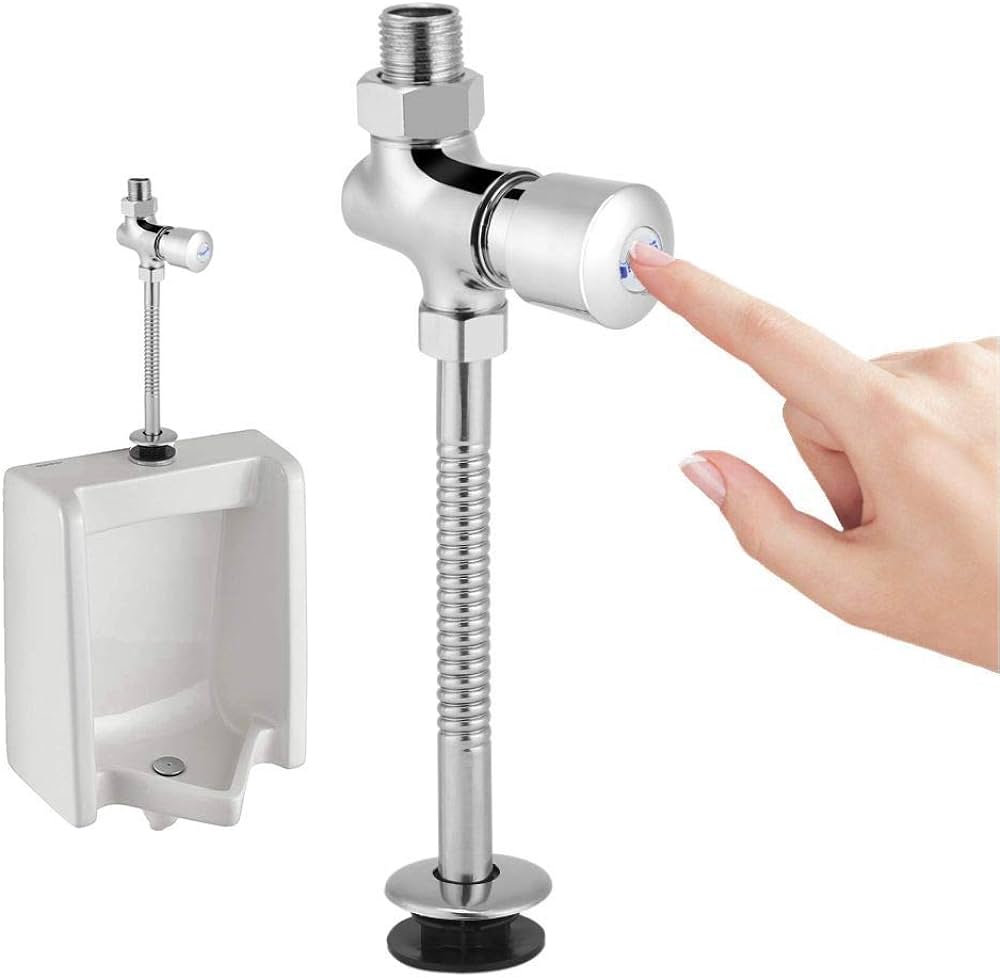One type of plumbing fixture that is frequently seen in public or commercial restrooms is the urinal push valve. It functions by pushing a button or lever to start the flushing process, which releases a fixed volume of water to clean the urinal bowl. Water is conserved because this system ensures that the least amount of water is utilized for each flush. Because of their ease of use, dependability, and efficiency, urinal push valves are frequently chosen in busy restrooms to preserve hygienic conditions while reducing water consumption and running expenses.
Urinal Push Valve Prices
Urinal push valve prices vary depending on the brand, and material used. Its price ranges from ₱195.00 to ₱264.00.
| Details | Material | Prices |
| Fivegold | Brass | ₱195.00 |
| Power Home | Brass | ₱195.00 |
| Kilenc | Metal | ₱209.00 |
| Weizhouli | Stainless Steel | ₱218.00 |
| Lucky | Brass | ₱205.00 |
| Aitemei | Brass | ₱264.00 |

Advantages of Urinal Push Valve
Water Conservation – By effectively controlling the amount of water used for each flush and only delivering what is required, they lower overall water consumption as well as utility expenses.
Hygiene – Push valves reduce contact with potentially contaminated surfaces and encourage improved restroom hygiene by doing away with the need for manual flushing.
Durability – Urinal push valves have a long lifespan and are usually strong and constructed to withstand heavy use, which lowers the need for maintenance and replacements.
Ease of Use – People of all ages and abilities can easily operate them thanks to their straightforward design, which typically only requires a single push or press.
Customized Flushing – A few models enable the flushing volume to be adjusted, giving you the freedom to satisfy certain water-saving objectives or restroom specifications.
Disadvantages of Urinal Push Valve
Initial Cost – Installing urinal push valves may require a larger initial investment than installing traditional manual flush mechanisms due to the higher upfront costs.
Maintenance Requirements – Cleaning or replacing internal parts like diaphragms or seals may be necessary periodically for push valves, which could raise the cost of continuous maintenance.
Sensitivity to Malfunctions – Push valves’ mechanical parts are subject to wear and tear over time, which could result in leaks or malfunctions if improperly cared for or maintained.
Dependency on Water Pressure – Consistent water pressure is necessary for push valves to function properly. Variations in water pressure can impact these valves’ performance, resulting in partial flushes or other problems.
Video of Urinal Push Valve
FAQs
How do push valves in urinals operate?
Push valve urinals work by pressing a button or lever, which activates a mechanism that flushes waste away by releasing a set volume of water into the urinal bowl. Additionally, some models might have electrical or sensor-based functionality.
Are push valves for urinals water-efficient?
Yes, urinal push valves are made to be water-efficient; they only release the minimum amount of water required for each flush to clean the bowl. This encourages water conservation and lowers overall water usage in public and commercial restrooms.
Do push valves for urinals need to be powered?
While many urinal push valves are mechanically operated, some models that are electronic or sensor-operated might need electricity to work. These electronic valves may have extra features like touchless operation or programmable settings.
How frequently should urinal push valves be maintained?
Push valves for urinals have different maintenance needs based on the type of valve, usage, and water quality. Generally speaking, to ensure smooth operation and prevent issues like leaks or clogs, they might require routine cleaning and inspection.
Is it possible to retrofit urinal push valves onto pre-existing urinals?
Urinal push valves can frequently be installed retrofitted onto already-existing urinals to take the place of manual flush mechanisms. However, compatibility problems with the plumbing system or urinal design could occur, necessitating further adjustments or replacements.


